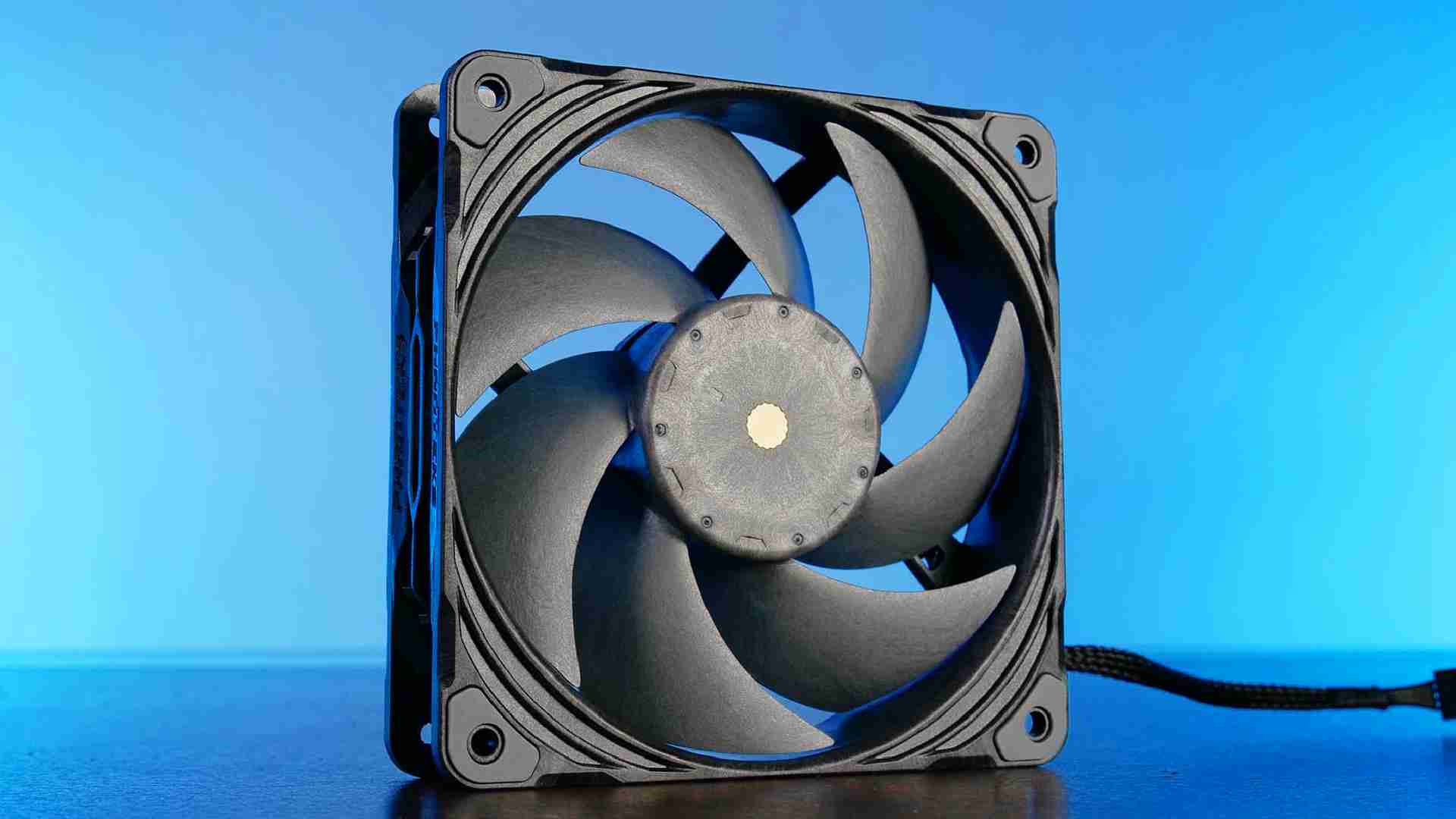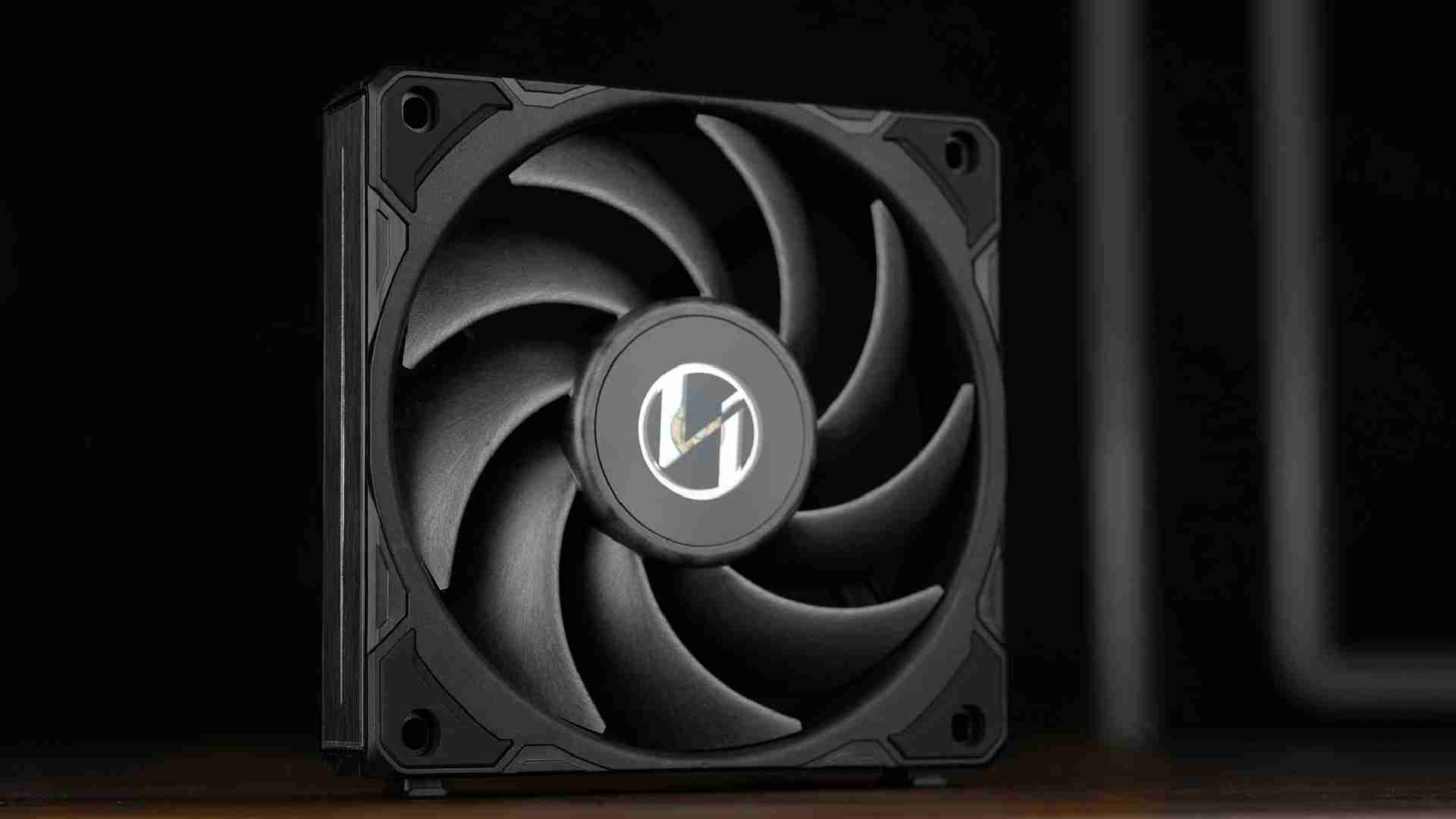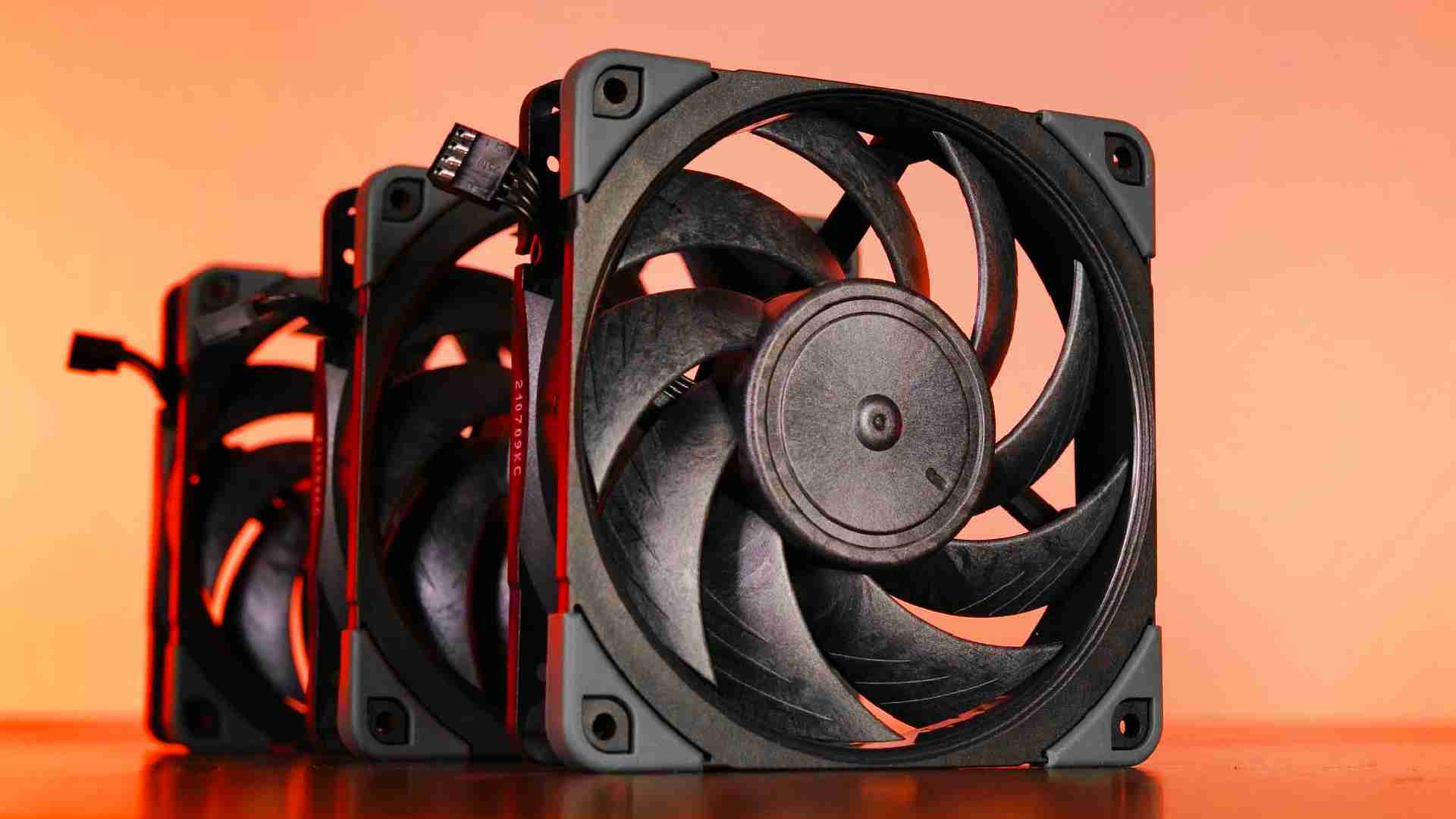Lian Li Uni SL-Infinity 120 Fan Review
Introduction
Every few years, a new piece of hardware appears which is able to outperform the last generation in every aspect. Performance, Quality, Features. Finally, it happened again for the Fan category. Lian Lis Uni SL-INF fans promise best-in-class performance, but can they keep it?
Positive
- Excellent Performance
- Best-in-Class Noise-to-Performance
- Excellent Installation Methods
- Best-in-Class Build Quality
- Every RGB feature imaginable
- Best-in-Class controller Software
Neutral
Negative
What's in the Box?

A triple-pack of Lian Li's Uni SL Infinity fans are coming inside a well-designed thick carton box featuring some imagery and the usual spec sheet.
Once unboxed, we will not only find the fans themselves but also a whole range of installation equipment:
- 3x Uni SL Infinity 120mm Fans
- 3x Fan Screws
- 4x Proprietary Single- Connector
- 1x 1-2 Proprietary Splitter
- Controller
| Name | Lian Li Uni Fan SL-Infinity 120 |
| Size | 120x122.1x25mm |
| Speed | 2100RPM |
| Airflow | 61.3CFM |
| Static Pressure | 2.66mm/H2O |
| Noise | <29dbA |
| Connection | Proprietary until controller - 4-Pin PWM after |
| Bearing | Fluid Dynamic Bearing |
| RGB |
Infinity Mirror Central Fan Hub Infinity Mirror 2x sides of the Frame RGB over Milky Wings from Central Fan Hub |
| RGB Connection | Proprietary until controller - 3-Pin ARGB after |
Installation
Although installing the fan is 100% similar to any other fan out there in form of a - position then screw-in - approach, the connection process provides us with a variety of possibilities.

One side of the fan houses the male version of Lian Li's 7-pin Fan connector while the other side houses the female version. This connector is responsible for everything that the fan is supposed to do, Light and Speed.
In order to use the fan, we are required to use this connector one way or the other in combination with the included controller.

The Controller comes with 4 available proprietary ports. Other than the free ports, there are 2x Sata Power, a regular USB 2.0 Header, and a 3-pin ARGB + 4-Pin PWM cable already pre-attached.
In order to start using the Controller we need to connect every cable to the appropriate header on the motherboard. Please note that not both Sata Power ports are required for the Controller to function properly, but just in case you are maxing out the controller by using 16x of Lian Li's fans. However, as caution is better than an apology, we recommend just connecting both.

Once the controller is up and running we are ready to connect the fans.
In case you are planning to position the fans in different locations (Back + Top + Front) we can use the single connection cables. By positioning the thick side of the cable onto the male connector on the fan frame, we can slide it into the holder by pushing it up. The other side of the connector is then supposed to be connected to the controller. This process can then be repeated up to 4x times.

In case you would like to group 2 fans that are not positioned right next to each other, we can use the same procedure as for a single fan, but combine it with the 2-1 Splitter included in the box. This creates a cluster of fans that can later be easily controlled via software while they are not directly connected to each other.

The last method of installation can be achieved by daisy-chaining to each other. While most fan's daisy-chaining feature comes in for daisy-chaining the cable, Lian Li's approach is vastly different.
By positioning the Male- port of a fan right next to the female port of a second fan, we can use the hooks that are present on the edges of a Uni SL fan to slide two fans into each other creating a 2x1 Fan cluster.
This process can also be repeated up to 4x times creating a 480mm black of fans.
From there, the last (or first) fan will need to be connected to the controller using the proprietary single connection cable.

Please note that in the case of a daisy-chained Fan wall, we are left with the first and last fans still having the hooks present on the outstanding sides. This may lead to issues for radiator installations, or you might just not like it. In these cases, you are free to twist them and remove them creating the clearance needed. If they are needed at a later point, you are always free to re-position them by pressing them in and twisting them the other way.

Once every fan is connected and the PC is running, we can install Lian Li's L-Connect 3 Controller Software.
Usually, we are not big fans of proprietary Fan software. They tend to be poorly developed, buggy, and overly excitingly looking whilst not giving you any features that a motherboard software couldn't.
In case you want to avoid using Lian Li's L-3, you are open to installing it, and applying the Motherboard control setting buttons for Speed and Light. Once this mode is on, you can continue using your Motherboard Software for every kind of control while the PWM and 3-pin ARGB cable of the controller, which we connected earlier, will be used as a passthrough connection.

However, we strongly urge you to give Lian Li's L-Connect 3 a try. The software is very well designed and we were surprised by how many features, modes, and direct control you can have using it. Although we are usually trying to avoid any sort of extra software to the biggest extent possible, we were surprised by how happy we were using it.
As this review is supposed to be on the hardware- side of the fan, we will not be going in-depth into the software, but as we were forced to use it, we are able to confirm that thus far, we have not seen such a well developed ARGB and Fan speed software, neither from a Fan manufacturer nor from a Motherboard manufacturer.
Please also keep in mind that due to the Fans having multiple different ARGB strips, mirrors, and illumination sources, the only way of properly controlling each of them individually will be by using Lian Li's software. You can use your motherboard software, but getting different colors onto different portions of the fan will require an immense amount of trial and error.
Appearance
Some Fans have Infinity mirrors on the fan hub. Others have light coming out of them and spreading across the wings. Others have an ARGB strip going along the fan frame. Lian's Li's Uni SL Infinity fans have all of them combined.

For an ARGB enthusiast, this must be heaven. The fan is lit from the inside out with the light evenly spreading across the blades. The top and bottom frame sides are covered with two ARGB strips. On the two sides of the frame that do not house the connectors, we have 2 ARGB Infinity mirrors. But Lian Li was still not done. In case you may need to install the fan in reverse, we have another 3 strips on the backside. Two pressed against the fan's frame, and one ring around the well-designed aluminum Lian Li badge in the center.
No matter from what angle you look at the fan, you will always see some sort of ARGB light.

Ignoring the ARGB overdose that this fan comes with, unlit, the fan still looks like a high-end high-quality fan. Each corner of the fan is covered in a thick layer of rubber for additional noise and vibration absorption.
The fan frame is extremely stiff resulting in a highly-riding fan that will not be damaged easily.

However, as the design is always a factor that the end-buyer should be deciding on, we will leave the conclusion of this category up to you. Just keep in mind that the fan is very well manufactured, feels incredibly sturdy, and the ARGB implementation is definitely best-in-class using only the best and brightest types of LEDs.
Benchmark
We benchmarked Lian Li's Uni SL-Infinity Fans using our usual setup. Whilst letting them spin at max speed, they managed to keep the CPU at 40.1°C. This places them just a single degree behind the be quiet Silent Wings Pro 4 120 and Noctua's NF-A12x25. An excellent result thus far.

However, the surprising aspect of these fans came inform of their Noise-to-Performance ratio. For the very first time, we were able to benchmark a fan that was able to outperform Noctua's previously set best noise-to-performance ratio.
Until about 50% of their speed, Lian Li's Uni SL had the best Noise-to-Performance ratio ever recorded by us, making them the best fans on the market right now. A truly amazing result.

Conclusion
Absolutely stunning.
Although the fan blade size did not give us the impression that we were looking at high-performance fans, it turned out that Lian Li's Uni SL-Infinity fans are in fact the best-performing fans out there. With excellent max performance and the very best noise-to-performance ratio, they managed to outperform Noctua's NF-A12x25. Therefore, making them the new Best-in-Class 120mm Case fans.

But it's not only their performance that stunned us. The ARGB implementation is incredible as well. Infinity Mirror on 3 occasions, central illumination, and a total of 5 ARGB stripes are plastered all around the fan providing you with every ARGB implementation method ever created.
The quality of used LEDs is amazing as well. No stutters, no fading light. Everything is exactly as it is supposed to be.

Interestingly for us though, Lian Li's Uni SL-Infinity fans made us re-think previously set preferences. Until now, we were by default not huge fans of proprietary connectors and mandatory software. However, in this case, we loved it.
The proprietary connection is incredibly sturdy whilst allowing you to do things like daisy-chaining complete fans to one another eliminating any type of space in between them and providing you with an incredibly sturdy connection.

The software had the exact same effect. Until now, we did not have any sort of positive experience with proprietary software. Lian Li's L-Connect 3 on the other hand, is very well-designed, utilitarian, and not crowded with unnecessary animations and function-reducing images. It does exactly what it needs to do, whilst looking good and being easy to understand. Exactly what we expect.

All in all, we were incredibly surprised by these fans. We were expecting an average-performing fan with so much ARGB that we assumed it to be a gimmick as a whole. However, we are finishing this review with the new Best-in-Class fan, in every category, Performance, Design, Quality, Software, and Connector. Truly, a new King on the Throne.


Xilence M906 XC081 Review
Xilence has an excellent track record of creating incredibly affordable coolers that perform like the competitions best. Lets
Read More
Phanteks T30 Review
Probably the most promising PC Fan out there right now is Phanteks T30. A monster 3000RPM Fan capable of moving your PC if it
Read More
Lian Li Uni P28 Review
Lian Li Uni Fans have been known for many things. Performance being one of them. But now, with the newest Uni P28, Lian Li tr
Read More
Noctua NF-A12x25 Chromax Black Review
With the introduction of Noctua's NF-A12x25, Noctua managed to produce probably the best Fan available on the market until to
Read More